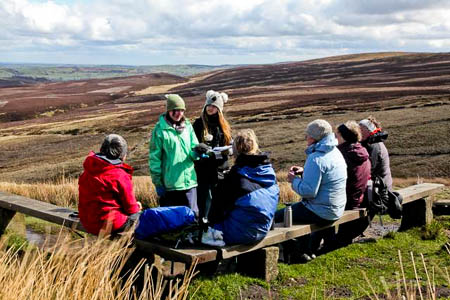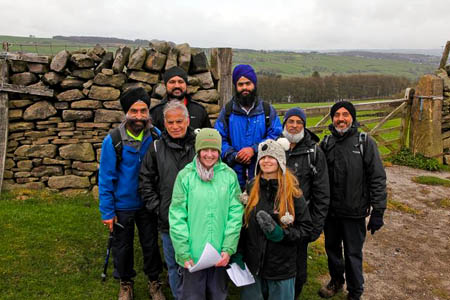Dog walkers mingled with literary pilgrims who had travelled half way round the globe at a windswept ruin high on the Pennine Way.
That was one of the findings of an informal survey of visitors to Top Withens by artist Simon Warner and two tourism students conducted over the Easter holiday.
The ruined farmhouse high above Haworth in West Yorkshire is believed to be the inspiration for Emily Brontë’s Wuthering Heights and attracts literary fans from across the world. But the building also stands on the Pennine Way, the 429km (267-mile) national trail that runs from Edale in Derbyshire to the Scottish border at Kirk Yetholm.
Mr Warner conducted the interviews with Jasmine Taylor and Rebecca Stott, third-year students on the in travel and tourism at the Keighley Campus of Leeds City College, and Judith Adams and Stacey Johnstone, of Whitestone Arts Company.
“We spent two days near Top Withens, on the footpath leading to it and at Bronte Waterfalls, and asked nearly 50 people how far they had travelled, the reasons for visiting and their impressions,” he said.
“It was a fairly random exercise but I think we got a good cross-section of people and it would probably be a similar story whenever you went up there.”
He said: “Beyond a certain altitude it’s a pre-industrial landscape with just the remnants of the packhorse trails visible.
“However with the growing popularity of long-distance walking it is reverting back to being a busy landscape as people criss-cross it on the Pennine Way and other paths; now for leisure rather than economic reasons.
“Interestingly we met a few people who had organised themselves into informal walking groups for various reasons.
“We met a group of middle aged Asian men who are doing quite long walks such as the Three Peaks every week, and a group of ladies who go to certain places to see very specific things including a spring walk in Addingham to see the flowers.
“These are groups we would not have known existed without going out onto the moors to speak to people.”
Information from the interviews will be used by Whitestone Arts Company, of which Mr Warner is a founder member, to create a mixed-media performance at a symposium, Unbounded Moor, in Haworth in October. This will bring together a diverse range of presenters, including poet Simon Armitage, to talk about landscape and literature, and share their inspirations.
Mr Warner added: “People feel a connection with the landscape, whatever reasons they may have for visiting.”
The local resident is artist in residence at the Watershed Landscape project, managed by rural regeneration company Pennine Prospects. He said: “Haworth Moor, Top Withens and the Brontës bring their own spirit to the place but I think it’s more than that.
“With the climb in altitude people seem to shed their everyday selves. The South Pennine uplands are isolated and yet, by being able to see so far, they are connected to the wider world.”
Simon Warner will also be giving an illustrated talk, Picturing the Watershed, in which he will refer to earlier portrayals of the South Pennines uplands by artists like Bill Brandt and Joseph Pighills, and describe how his own landscape techniques have evolved from black and white photography to digital video. The talk, from 2pm on Saturday, 23 June, at the Manor House Art Gallery and Museum, Ilkley, is free and there is no need to book.

